Procedures to follow when the Person you are worried about is currently at the Workplace
Anyone confirmed to be infected with COVID-19 or is being tested for it should stay a home. However, there may be cases where a family member shows signs of COVID-19 or shares information such as close interaction with an infected person that gives you a lot of worry about their health and that of other members of the household.
In the event of this:
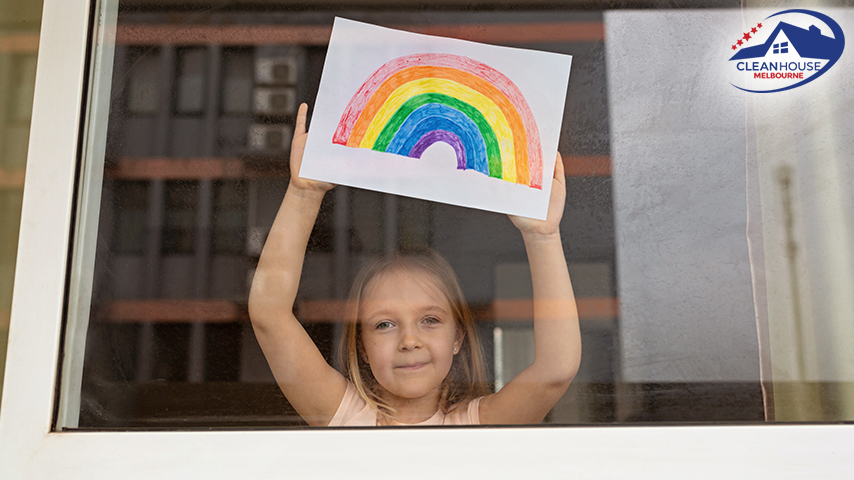
- Isolate the Person
Call 000 for immediate help if the person shows serious symptoms like difficulty in breathing. Else, you must follow some procedures to prevent the potential spread of the virus by the person through isolation from others. Make sure there are enough Personal Protective Equipment (PPE) available to the infected person, like hand sanitizer, disposable surgical masks and gloves, and tissues. Also, make sure you protect anyone giving that person a hand.
- Assign Separate Household Items
The sick person should not share household items such as dishes, drinking glasses, eating utensils, cups, bedding, toothbrushes, and towels, or any other items. In the case of non- dishes and utensils and dishes, they should be touched with disposable gloves and washed with dishwasher, soap, and hot water.
- Get Advice and evaluate the Risks
To figure out if suspecting the person is infected with COVID-19 is appropriate, interact with the person about your worries and listen to their response. Call the helpline of your state or territory to get government health advice. Stick to the advice given by the public health unit of your state and region. You can also call the National Coronavirus helpline on 1800 020 080 as they work 24-hours a day, seven days a week. You can get advice from the National Helpline on when and how to get medical assistance or how to be tested for coronavirus.
Make sure you note down the areas the person has been to, the people he/she come in close contact with, and for how long. This will give you information about the risks to other people and places to clean and disinfect in the home and other places. The information may also help the public health unit of your state and territory if they need to do a follow up in the future. You may also be able to access specific WHS advice on your current situation from the WHS regulator in your state or region.
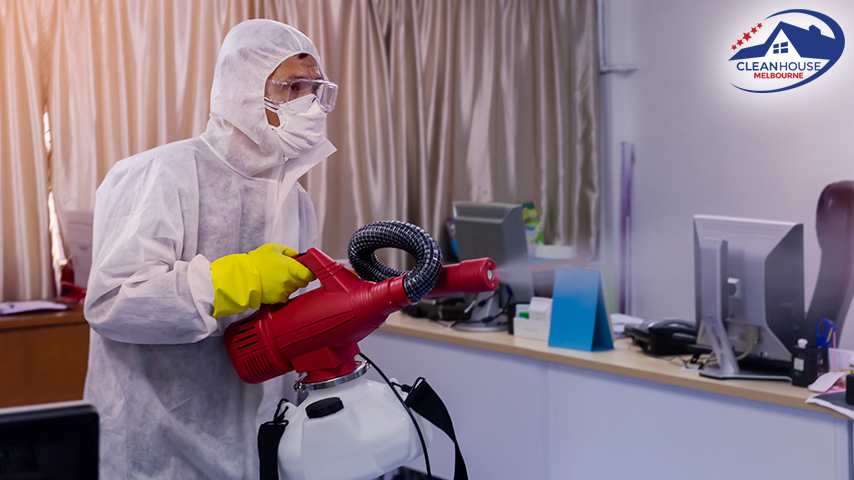
- Clean and disinfect
Seal off the affected places the person has been to in the home and restrict use or entrance to those areas until proper cleaning and disinfection have been done. Open the doors and windows to allow for enough ventilation. Ensure all areas such as kitchens, bathrooms, and equipment or PPE previously used by the person of concern are properly cleaned and disinfected. You can get more information on our house COVID cleaning and disinfect here.
- Get the right PPE
Make the right PPE available for cleaners such as disposable gloves or the right gloves to the cleaning products they are using, and safety glasses to protect their eyes against splashes. In the event of visible contamination with respiratory secretions or other fluids from the body in the area, the cleaners should put on a disposable apron. You may also get more information from the public health unit of your state and territory on how and where to clean. Make sure you stick to those guidelines.
- Find out and tell Close Contacts
Close contacts of a confirmed COVID-19 case will be identified by the state or region public health unit and give them guidelines, in accordance to quarantine requirements. However, look at the possible contacts of the infected person to assess the level of risk home and help the public health unit of your state and region. If you receive authorization from health officials, you can go ahead and tell close contacts of the person of concern that they may have been exposed to COVID-19 and that they may be required to quarantine.
Do you have someone with the symptoms of COVID-19 at home? If a family member you live with gets sick with COVID-19, there are steps you can take to help the person heal and keep the rest of your family members safe. To get started, these recommended guidelines from the Centers for Disease Control and Prevention (CDC) for taking care of a household member who has the coronavirus disease should be followed accordingly.
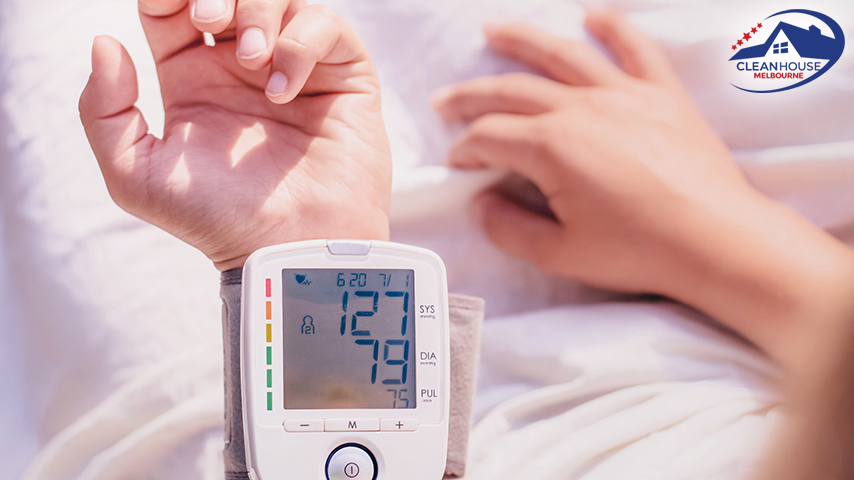
- Monitoring Your Own Health
Every household member in your home should closely monitor their health the same way they monitor the sick person. If anyone develops coronavirus-related symptoms including cough, fever, or shortness of breath, contact your physician immediately.
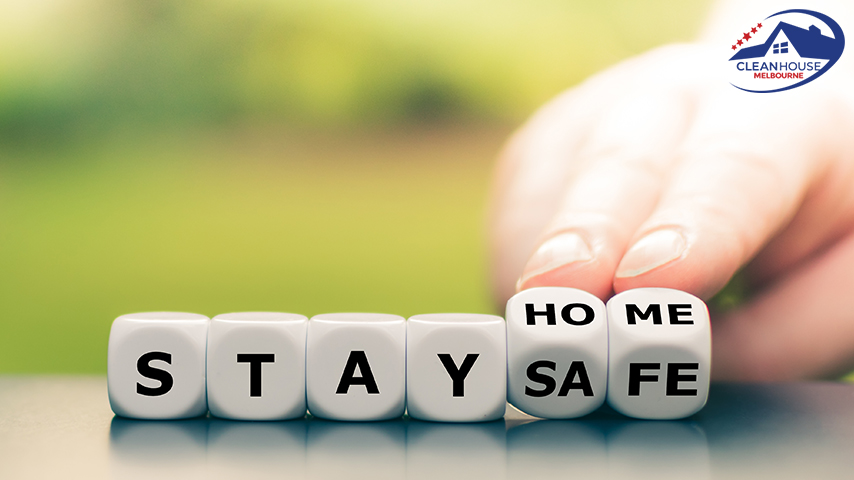
When to Discontinue Home Isolation
According to CDC guidelines, a sick person with COVID-19 symptoms can leave home or discontinue home isolation after he/she meets these three conditions:
- At least 7 days symptoms first appeared
- Has lived without fever for at least 72 hours without taking fever-reducing medication
- Other symptoms cough, shortness of breath have improved
When to Seek Medical Attention
In the case of any emergency warning symptoms, the CDC recommends getting medical attention immediately. These include:
- Bluish lips or face
- Shortness of breath or difficulty breathing
- New confusion or inability to rouse
- Pressure in their chest or persistent pain
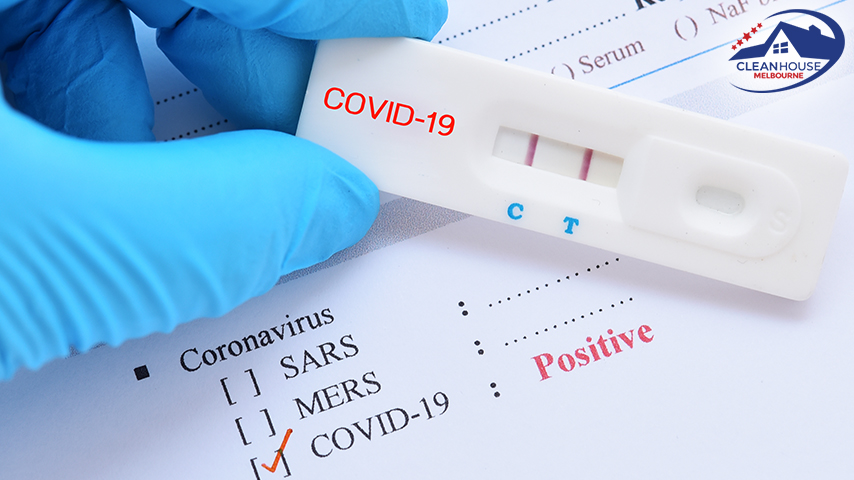
FAQs about Disinfect from COVID 19:
- What immediate actions should be taken if someone tests positive for COVID-19 at home?
Isolate the individual and ensure they use a separate bathroom and personal items. - How can COVID-19 transmission be minimised within the home?
Limit contact, enforce mask-wearing, and frequently disinfect shared spaces. - What PPE is essential for household caregivers?
Caregivers should wear masks, gloves, and use hand sanitiser regularly. - How should household items be managed for an infected person?
Assign separate items like utensils, bedding, and towels to the infected individual. - What should be done if symptoms worsen for a COVID-positive person?
Seek medical help immediately if symptoms like breathing difficulties develop. - How often should high-touch areas be cleaned?
Disinfect doorknobs, light switches, and bathroom surfaces multiple times daily. - Can ventilation help reduce COVID-19 spread indoors?
Yes, increasing airflow by opening windows helps reduce virus particles in the air. - What are the quarantine guidelines for household members?
Household members should monitor their health and quarantine according to health authority advice. - Is professional disinfection recommended after a COVID case at home?
Hiring professionals can ensure thorough sanitisation, particularly in shared spaces. - When is it safe for an infected person to end isolation?
Isolation can end when symptoms improve, and the individual is fever-free for a set period as per health guidelines.
Conclusion
People who are vulnerable to serious illness from COVID-19 should avoid caring for someone with COVID-19. These include those with chronic medical conditions (e.g., heart disease, diabetes), compromised immune systems, or elderly persons. Get a complete instructional checklist on An Ultimate Guide To Handle COVID-19 Crisis in The Workplace and at Home here.


 Email Us
Email Us Whatsapp
Whatsapp


